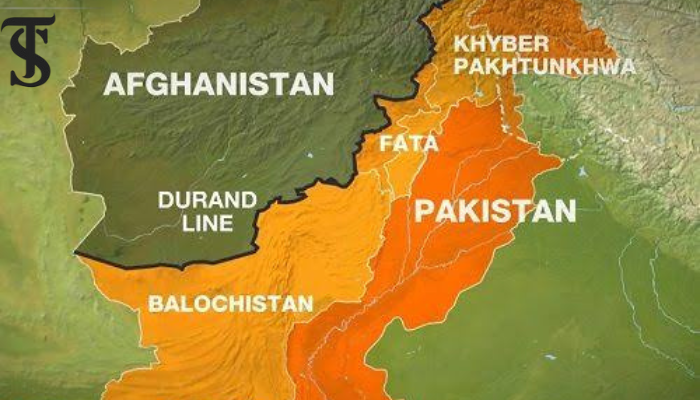Future of the Indus Water Treaty

- Violation and Weaponization of the Treaty: India’s construction of hydroelectric projects on western rivers violates the Indus Water Treaty, threatening Pakistan’s water security.
- Climate Change and Water Scarcity: Climate change, glacial melt, and increased water demand exacerbate water stress in the Indus Basin, heightening tensions between India and Pakistan.
- Geopolitical and Political Instability: Geopolitical tensions, including the Kashmir dispute, and Pakistan's political instability complicate effective water diplomacy and undermine the treaty’s implementation.
Since their partition in 1947, India and Pakistan have remained in a state of conflict. Over the decades, the two nations have fought four wars, engaged in continuous border clashes, and developed nuclear weapons. Despite these tensions, one area where the two countries have cooperated is water distribution, especially through the Indus Water Treaty (IWT), one of the most significant international agreements in history.
However, over time, the treaty’s implementation has become increasingly complicated. Contributing factors include India’s aggressive stance, rising water nationalism, climate change, and Pakistan’s lack of proactive engagement. The risk of an escalating water crisis remains high if both nations fail to effectively manage this issue. As Ismail Serageldin, former Vice President of the World Bank, stated in 1995, “If the wars of this century were fought over oil, the wars of the next century will be fought over water—unless we change our approach to managing this precious and vital resource.”
Historical Background of the Indus Water Treaty
The Indus Water Treaty’s origins lie in the partition of 1947, when British India was divided into two independent states, India and Pakistan. During the partition, the issue of water resources was not given due consideration, leading to complications over shared water resources. Around 300 million people in both countries depended on the Indus River system for irrigation, agriculture, and livelihoods. River tributaries in the basin account for 65% of Pakistan’s drainage area and 14% of India’s drainage area. The dependence of both nations on these shared resources led to the urgent need for an agreement on water distribution.
The Indus Water Treaty (IWT) was eventually signed in 1960 after a series of discussions brokered by the World Bank between Indian Prime Minister Jawaharlal Nehru and Pakistani President Ayub Khan. Under the terms of the treaty, the three western rivers—Jhelum, Chenab, and Indus—were allocated to Pakistan, while India was given control over the eastern rivers—Ravi, Sutlej, and Beas. The treaty was considered a significant achievement in fostering cooperation between the two countries, despite their hostile relationship.
India’s Weaponization of the Indus Water Treaty
However, in recent years, India has violated the terms of the treaty, particularly concerning the western rivers. According to Article 3 of the IWT, India is prohibited from making use of the waters of the western rivers. Yet, in the past decade, India has constructed several hydroelectric projects, such as the Kishanganga, Ratle, and Baglihar dams, on these rivers. Pakistan has repeatedly raised concerns at international forums, arguing that these projects interfere with the natural flow of water and could have detrimental effects on Pakistan’s agricultural and water resources. Water engineer John Briscoe warned that if India chooses to manipulate these water resources, it could impose significant reductions on water availability during crucial planting seasons in Pakistan.
Furthermore, India has sought to amend the treaty. Under Article 12, India issued a notice to Pakistan proposing modifications to the agreement. As legal expert Ahmer Bilal Soofi pointed out, while the treaty allows modifications or even termination, such actions would require the establishment of a new, standalone treaty between the two countries.
Factors Aggravating the Indus Water Treaty Dispute
Water Scarcity and Climate Change
The Indus Basin is facing extreme water stress due to several factors, including climate change, glacial melt, and irregular precipitation patterns. The Indus River system relies heavily on water from glaciers in the Himalayas, and higher temperatures are accelerating the shrinkage of these glaciers. As a result, the flow of water from these sources is declining, leading to lower river flows. Simultaneously, the demand for water is increasing due to population growth, agricultural needs, and urbanization. This imbalance between supply and demand has exacerbated tensions between India and Pakistan, as neither country has sufficient resources to meet its water needs.
Water Nationalism and Populism
In recent years, water has become a highly politicized issue in India-Pakistan relations. Indian nationalist leaders have used the issue of water distribution under the treaty as a rallying point, framing it as a question of sovereignty and justice. These populist leaders have claimed that Pakistan is violating the treaty and that India has the right to ensure a fair share of the water. Such rhetoric not only fuels nationalistic sentiments but also heightens distrust between the two countries. Pakistan views these claims as a threat to its water security, and this politicization of water resources further strains the cooperation that has existed under the IWT.
Geopolitical Tensions
The broader geopolitical context of India-Pakistan relations also affects the Indus Water Treaty. The longstanding territorial dispute over Kashmir, as well as other border issues, continues to cast a shadow over the treaty. When India unilaterally canceled meetings and engagements after terrorist attacks, such as the 2016 Uri attack, it created an environment of distrust. Indian Prime Minister Narendra Modi’s statement that “blood and water can’t flow together” further highlights how geopolitical tensions have the potential to undermine cooperation over water resources. If these issues are not addressed, the IWT risks becoming a casualty of larger geopolitical rivalries.
Political Instability in Pakistan
Pakistan’s political instability also hampers its ability to effectively manage water resources. Frequent changes in leadership, ongoing economic crises, and domestic policy fragmentation have weakened Pakistan’s ability to conduct coherent water diplomacy. The lack of a comprehensive water policy and ineffective coordination between various government agencies have made it difficult for Pakistan to respond proactively to India’s growing control over water resources. This political fragility has left Pakistan ill-prepared to deal with the evolving challenges posed by the Indus Water Treaty.
Conclusion
The Indus Water Treaty, once hailed as a remarkable example of cooperation between two adversarial nations, is now facing unprecedented challenges. Water scarcity, exacerbated by climate change, nationalistic rhetoric, geopolitical tensions, and political instability in Pakistan are all contributing to the strain on the treaty. If these challenges are not addressed, the risk of a water crisis in the region will only increase. To safeguard the treaty and ensure fair water distribution, both India and Pakistan must continue dialogue, update the treaty to incorporate climate change considerations, and engage in confidence-building measures. International mediation and technical support may also be necessary to resolve ongoing disputes and prevent further escalation. Without a proactive and cooperative approach, the Indus Water Treaty could be pushed to the brink, with devastating consequences for both nations.

Jai Kumar
The author is an International Relations graduate from the University of Sindh Jamshoro with a keen interest in global issues and strategic studies.





